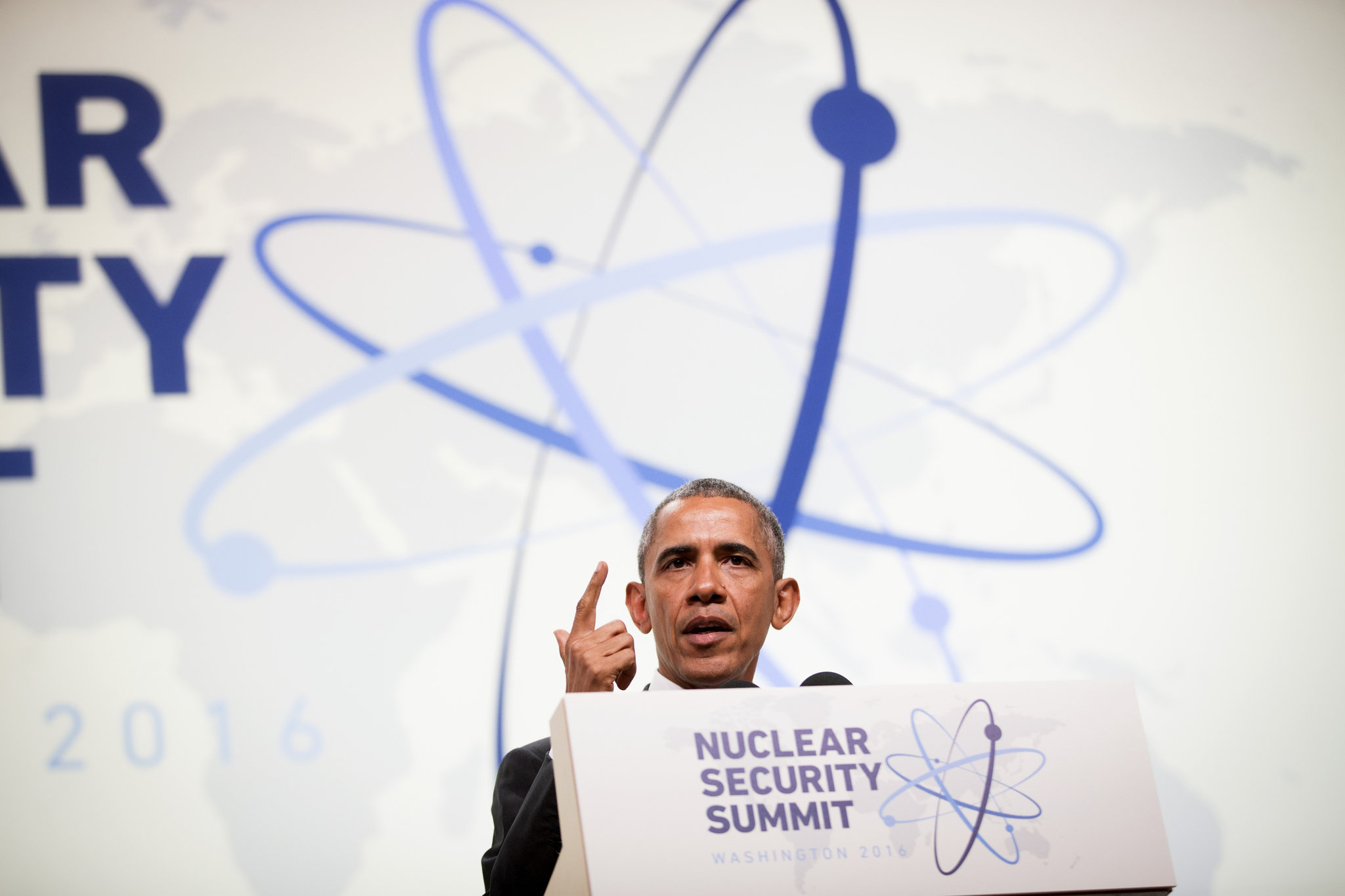Examining The Trump Administration's Approach To Expedited Nuclear Power Plant Builds

Table of Contents
Regulatory Streamlining and Permitting Reform
The administration aimed to drastically cut down the time and cost associated with obtaining permits for nuclear power plant construction, a key aspect of achieving expedited nuclear power plant builds.
Reducing Regulatory Burden
The core strategy involved reducing the regulatory burden on nuclear power plant projects. This included efforts to:
- Streamlined environmental impact reviews: The goal was to accelerate the environmental review process without sacrificing environmental protection. This involved streamlining paperwork, improving inter-agency coordination, and potentially using alternative assessment methods.
- Accelerated licensing processes: The Nuclear Regulatory Commission (NRC) was encouraged to expedite the licensing process for new plants, reducing the often lengthy review periods.
- Reduced bureaucratic hurdles: Efforts were made to identify and eliminate unnecessary bureaucratic obstacles that delayed project approvals.
- Focus on One-Step Permitting: The ideal was to consolidate multiple permitting processes into a single, integrated system, reducing delays and costs associated with multiple applications and reviews.
Challenges to Regulatory Reform
Despite these efforts, significant hurdles hampered the full implementation of streamlining initiatives.
- Lengthy court battles delaying projects: Environmental groups and other stakeholders filed numerous lawsuits challenging the administration's regulatory changes, leading to lengthy legal battles and project delays. These legal challenges frequently centered around environmental concerns and insufficient safety assessments.
- Public concerns over nuclear waste disposal and safety: Public opposition to nuclear power, fueled by concerns about nuclear waste disposal and potential accidents, remained a significant barrier. This often translated into political pressure against expedited projects.
- Balancing speed with thorough safety evaluations: A critical challenge was striking a balance between accelerating the permitting process and ensuring thorough safety evaluations to maintain public trust and minimize risk. The administration needed to address public concerns without compromising safety regulations.
Financial Incentives and Loan Guarantees
The Trump administration also explored various financial incentives to encourage private sector investment in new nuclear plant construction to support expedited nuclear power plant builds.
Government Support for Nuclear Projects
The administration offered different forms of government support:
- Loan guarantees to reduce financial risk for developers: The Department of Energy (DOE) offered loan guarantees to mitigate the financial risks associated with the high capital costs of nuclear power plant construction.
- Tax credits and other subsidies: Tax credits and other financial incentives were explored to make nuclear power more economically competitive with other energy sources.
- Investment in advanced reactor technologies: Funding was directed towards research and development of advanced reactor technologies, including small modular reactors (SMRs), seen as having potential to reduce costs and accelerate construction times.
Market Realities and Economic Viability
Despite these incentives, significant economic challenges persisted:
- Competition from cheaper energy sources (natural gas, renewables): The relatively low prices of natural gas and the increasing competitiveness of renewable energy sources (solar and wind) created a challenging market environment for nuclear power.
- Difficulty in securing private investment: The high capital costs and long construction lead times of nuclear power plants continued to deter private investment, even with government incentives.
- Uncertainty about future energy prices: Uncertainties in future energy prices added to the financial risks associated with nuclear power plant construction, making it difficult to secure private funding.
Technological Advancements and Small Modular Reactors (SMRs)
The administration placed a significant emphasis on SMRs as a means to achieve expedited nuclear power plant builds.
Focus on SMR Development
The belief was that SMRs offered a potential path to overcome some of the challenges associated with traditional nuclear power plants:
- Support for research and development of SMR technologies: Government funding was allocated to support R&D efforts aimed at advancing SMR technologies.
- Streamlined licensing for SMRs: Efforts were made to streamline the licensing process specifically for SMRs, taking advantage of their modular design and smaller scale.
- Potential for factory production and modular construction to speed up build times: The modular nature of SMRs offered the potential for factory production and prefabrication, significantly reducing on-site construction time.
Technological Hurdles and Market Penetration
Despite the potential, SMRs also faced challenges:
- Need for further technological advancements and testing: SMR technology was still relatively immature, requiring further testing and demonstration projects before widespread adoption.
- Uncertainty about the regulatory landscape for SMRs: The regulatory framework for SMRs was still evolving, creating uncertainties for developers and investors.
- Limited market experience and proven track record for SMRs: The lack of a proven track record and limited market experience with SMRs hindered their widespread deployment.
The Legacy of Expedited Nuclear Power Plant Builds under the Trump Administration
The Trump administration's policies on expedited nuclear power plant builds had a complex and lasting impact.
Short-Term Impact
In the short term, the administration's policies had a limited impact on the pace of new nuclear power plant construction. While some regulatory streamlining occurred, it was often offset by legal challenges and market realities.
Long-Term Implications
The long-term consequences are still unfolding. The efforts to promote expedited nuclear power plant builds, including the emphasis on SMRs and regulatory reform, could influence future administrations' approaches to nuclear energy development and policy. The legacy will be defined by the ultimate success or failure of these initiatives in contributing to a larger role for nuclear energy in the US energy mix.
Conclusion
The Trump administration's approach to expedited nuclear power plant builds was a multifaceted strategy with mixed results. While regulatory streamlining and financial incentives were implemented, significant challenges related to cost, market competition, public perception, and technological maturity persisted. The long-term impact on the future of nuclear power remains to be seen. Further research and analysis are crucial to fully understand the legacy of these policies and inform future strategies for expedited nuclear power plant builds in the United States. We need continued discussion and innovation to overcome the obstacles hindering the development of efficient and safe expedited nuclear power plant builds.

Featured Posts
-
 Asylum Seeker Claims Exemption From Inspectorates Legal Opinion
May 11, 2025
Asylum Seeker Claims Exemption From Inspectorates Legal Opinion
May 11, 2025 -
 Ufc 315 Valentina Shevchenko Vs Manon Fiorot Predictions And Best Bets
May 11, 2025
Ufc 315 Valentina Shevchenko Vs Manon Fiorot Predictions And Best Bets
May 11, 2025 -
 New Calvin Klein Campaign Featuring Lily Collins Photo Gallery
May 11, 2025
New Calvin Klein Campaign Featuring Lily Collins Photo Gallery
May 11, 2025 -
 Political Fallout Schoof Avoids Debate Following Fabers Honours Veto
May 11, 2025
Political Fallout Schoof Avoids Debate Following Fabers Honours Veto
May 11, 2025 -
 Aaron Judge At 1 000 Games Hall Of Fame Case Building
May 11, 2025
Aaron Judge At 1 000 Games Hall Of Fame Case Building
May 11, 2025
